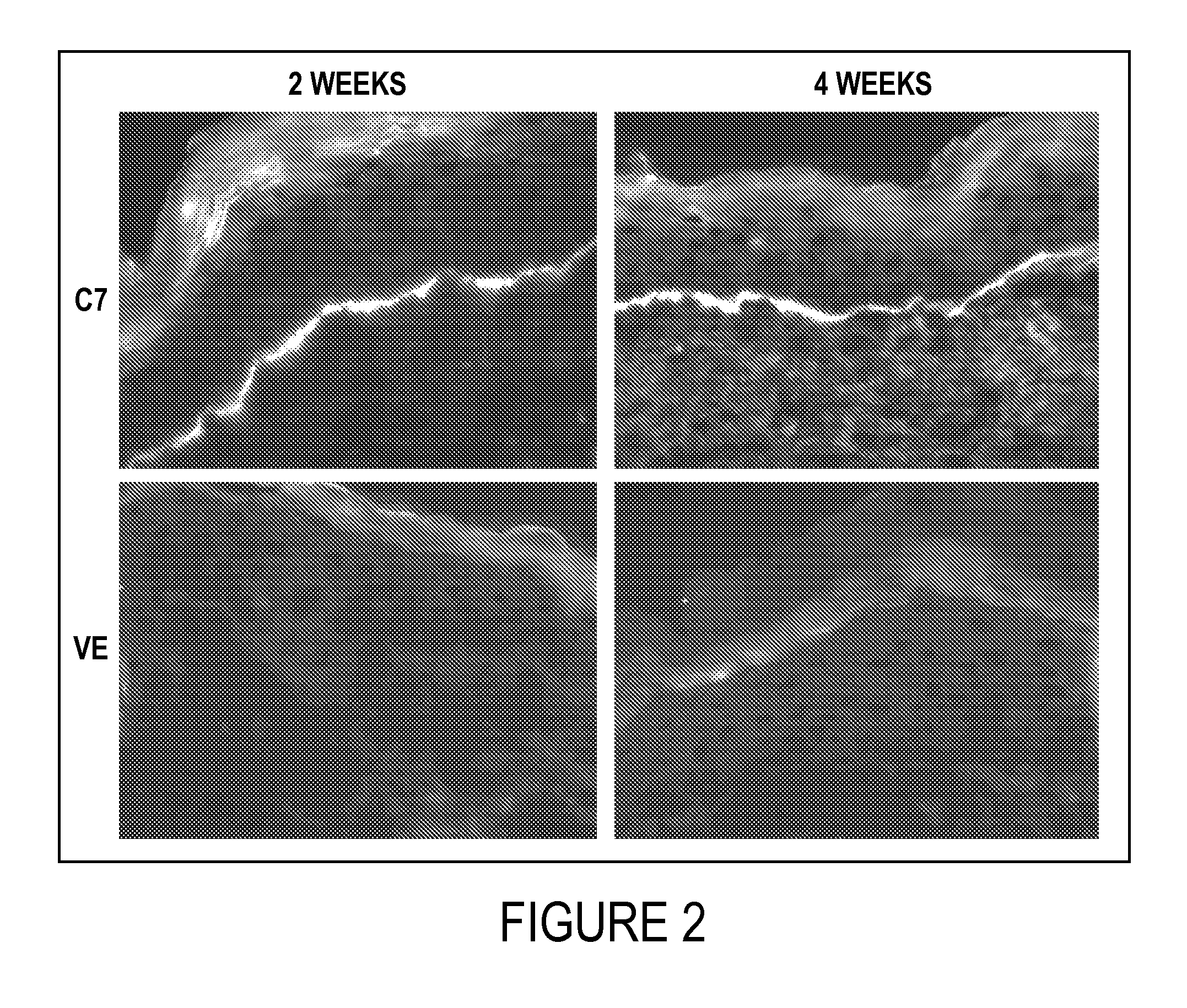Composition and Method for Healing of Skin Wounds
a skin wound and composition technology, applied in the field of skin wound healing, can solve the problems of not being able to achieve the effect of being effective and easy to administer
- Summary
- Abstract
- Description
- Claims
- Application Information
AI Technical Summary
Benefits of technology
Problems solved by technology
Method used
Image
Examples
examples
[0073]1. Topical Application of C7 Promoted Wound Healing
[0074]A 1.0-cm2 (1 cm×1 cm) square full-thickness excision wound was made on the mid-back of 8 to 10 week old athymic nude mice and human recombinant C7 (40 μg) was applied topically once on day 0 (n=20 mice per group).
[0075]FIG. 1A shows photographs of the wound site on representative days 0, 5, 8, 10, 12 and 14. Wound sizes were significantly reduced in mice topically treated with C7, but not the vehicle cream alone (VE) (Control). FIG. 1B shows the wound size plotted against the days (mean±SD wound size measurements at day 0, 5, 8, 10, 12 and 14 post-wounding, n=20 mice for each group).
2. C7 Applied Topically on the Wound Incorporates into the Mice's BMZ
[0076]Immunofluorescence staining of the mice's skin was performed with an antibody specific for human C7 at 2 and 4 weeks after topical application of C7. Compared to the vehicle-treated wounds, the healed wounds treated with C7 demonstrated a linear pattern of C7 depositio...
PUM
| Property | Measurement | Unit |
|---|---|---|
| size | aaaaa | aaaaa |
| volume | aaaaa | aaaaa |
| volume | aaaaa | aaaaa |
Abstract
Description
Claims
Application Information
 Login to View More
Login to View More - R&D
- Intellectual Property
- Life Sciences
- Materials
- Tech Scout
- Unparalleled Data Quality
- Higher Quality Content
- 60% Fewer Hallucinations
Browse by: Latest US Patents, China's latest patents, Technical Efficacy Thesaurus, Application Domain, Technology Topic, Popular Technical Reports.
© 2025 PatSnap. All rights reserved.Legal|Privacy policy|Modern Slavery Act Transparency Statement|Sitemap|About US| Contact US: help@patsnap.com



